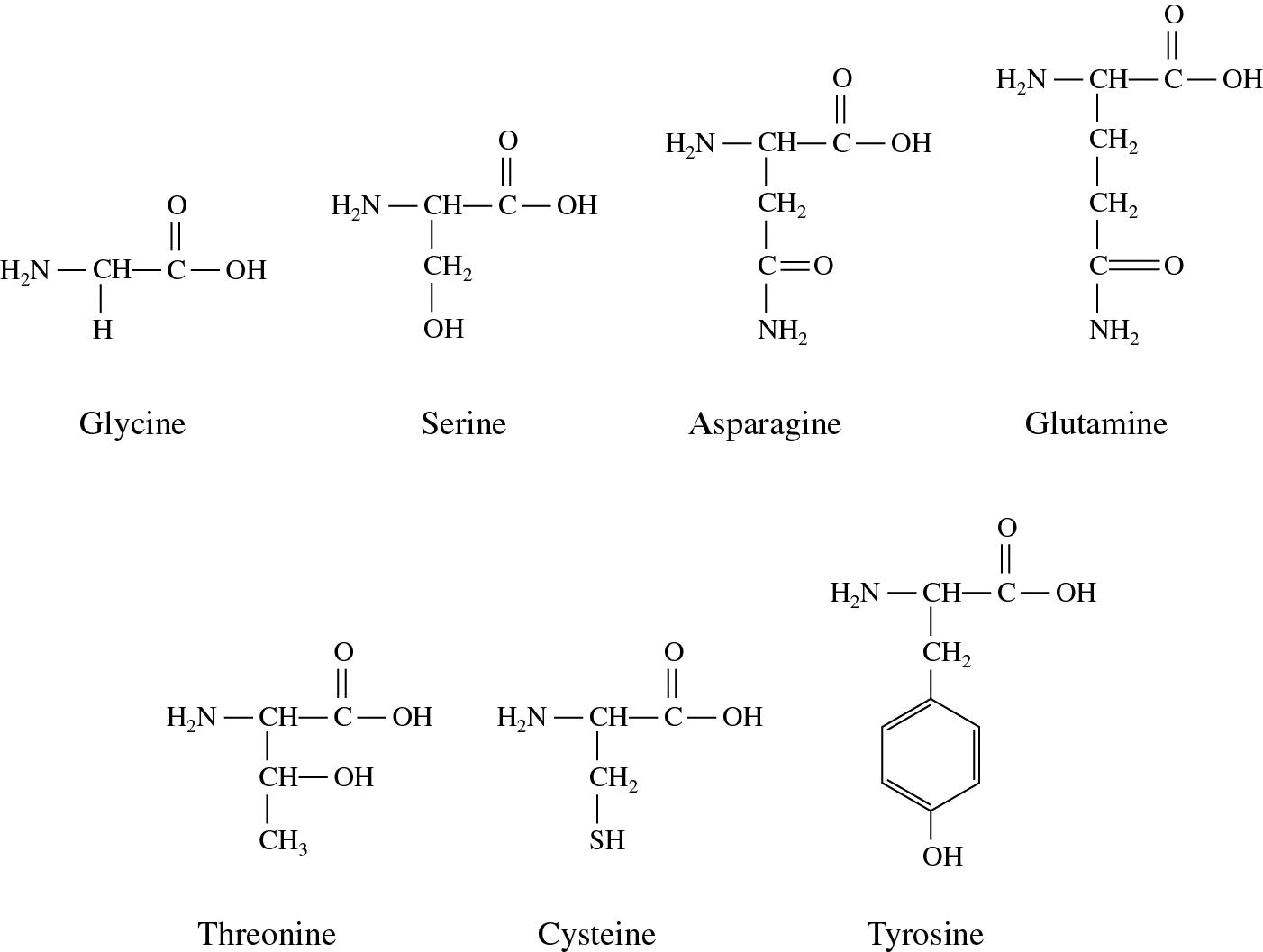Hydrophilic and hydrophobic are two terms that are commonly used to describe the properties of molecules. These terms refer to the ability of a molecule to interact with water. Hydrophilic molecules are attracted to water, while hydrophobic molecules repel it.
The term polar refers to a molecule that has a positive and negative end. This polarity allows the molecule to interact with other polar molecules, such as water. Hydrophilic molecules are typically polar, which means that they have a charge separation that makes them attracted to water.
One example of a hydrophilic molecule is glucose. Glucose is a sugar molecule that is polar and has many hydroxyl groups attached to it. These hydroxyl groups alow glucose to interact with water and other polar molecules. Because of its hydrophilic nature, glucose is an important molecule in many biological processes, including cellular respiration and photosynthesis.
In contrast, hydrophobic molecules are nonpolar, which means that they do not have a charge separation. These molecules are not attracted to water and tend to cluster together in nonpolar environments. One example of a hydrophobic molecule is oil. Oil is made up of long chains of nonpolar hydrocarbons, which means that it will not dissolve in water.
The hydrophobic nature of oil has important implications for the environment. When oil spills occur, the oil can form a thick layer on the surface of the water, preventing oxygen from reaching the aquatic organisms below. This can have devastating effects on marine ecosystems.
The terms hydrophilic and hydrophobic refer to the ability of a molecule to interact with water. Hydrophilic molecules are typically polar and attracted to water, while hydrophobic molecules are nonpolar and repel water. Understanding the properties of these molecules is important for understanding many biological and environmental processes.
Does Hydrophilicity Indicate Non-Polarity?
Hydrophilic does not mean non-polar. Hydrophilic substances have a high affinity for water and are typically polar molecules. This is because the water molecule is polar, with a positively charged region and a negatively charged region, and therefore it is attracted to other polar molecules through electrostatic forces. Hydrophilic substances can dissolve easily in water and are oftn used in applications where water absorption is important, such as in the production of textiles or paper products.
On the other hand, hydrophobic substances are repelled by water and are typically non-polar molecules. This is because non-polar molecules have no charge separation and are therefore not attracted to the polar water molecule. Hydrophobic substances are often used in applications where water resistance is important, such as in the production of waterproof clothing or coatings for electronic devices.
It is important to note that while hydrophilic substances are usually polar and hydrophobic substances are usually non-polar, there are exceptions to this rule. Some substances may have both hydrophilic and hydrophobic properties, which can make them useful in a variety of applications. Additionally, some substances may be polar but still hydrophobic if the polar groups are arranged in a way that minimizes contact with water, such as in the case of some lipid molecules.

Source: dummies.com
Characteristics of Nonpolar Molecules: Hydrophilic or Hydrophobic?
Nonpolar molecules are known to be hydrophobic, meaning they do not mix or dissolve in water. This is because water molecules are polar and are attracted to other polar molecules through hydrogen bonding. Nonpolar molecules, on the other hand, lack a charge separation and cannot participate in hydrogen bonding with water molecules. Therefore, they tend to aggregate together and exclude water molecules. This is why oil and water do not mix – oil is composed of nonpolar molecules and water is composed of polar molecules.
It is important to note that not all nonpolar molecules are hydrophobic. Some nonpolar molecules, such as certain types of surfactants, can actually be hydrophilic. These molecules contain both polar and nonpolar regions, allowing them to interact with both polar and nonpolar substances.
To summarize, nonpolar molecules are generally hydrophobic and do not mix well with water. However, there are exceptions to this rule, such as surfactants, that can be hydrophilic.
Are All Polar Molecules Hydrophilic?
Hydrophilic molecules are those that have an affinity for water. They are polar molecules that have a charge distribution that makes them interact with water molecules. This property is due to the presence of polar groups in ther structure, such as hydroxyl (-OH), carbonyl (-C=O), or amino (-NH2) groups.
However, not all polar molecules are hydrophilic. For example, some polar molecules, such as nonpolar solvents like benzene or toluene, are not soluble in water and are therefore not hydrophilic. Similarly, some polar molecules, such as carbon dioxide (CO2), are not hydrophilic despite being polar because they do not have a charge distribution that allows them to interact with water molecules.
While all hydrophilic molecules are polar, not all polar molecules are hydrophilic. The hydrophilicity of a molecule depends on its specific chemical structure and the presence of polar groups that allow it to interact with water molecules.
Solubility of Hydrophilic Substances
Hydrophilic substances are typically very soluble in water and other strongly polar solvents. This is becaue they contain polar functional groups, such as hydroxyl (-OH) or amino (-NH2) groups, which can form hydrogen bonds with water molecules. These hydrogen bonds help to stabilize the solute in the solvent, making it more likely to dissolve.
In contrast, hydrophobic substances are essentially insoluble in water and tend to be soluble in nonpolar solvents such as benzene and cyclohexane. This is because they lack polar functional groups and cannot form hydrogen bonds with water molecules. Instead, they interact more favorably with nonpolar solvents, which have similar intermolecular forces.
It is important to note that solubility is not an all-or-nothing characteristic, but rather a matter of degree. Some hydrophilic substances may be only slightly soluble in water, while others may be highly soluble. Similarly, some hydrophobic substances may be slightly soluble in nonpolar solvents, while others may be highly soluble.
Hydrophilic substances are generally soluble in water, while hydrophobic substances are generally insoluble in water but soluble in nonpolar solvents.

Conclusion
The concept of hydrophilic and hydrophobic molecules is crucial in understanding the behavior of substances in various environments. Hydrophilic substances, which are polar molecules, have an affinity for water and other polar solvents due to their charge-polarized nature. These substances tend to be highly soluble in polar solvents, but insoluble in nonpolar solvents. In contrast, hydrophobic substances, which are nonpolar molecules, repel water and other polar solvents due to their lack of charge. These substances are usually insoluble in polar solvents, but soluble in nonpolar solvents.
The distinction btween hydrophilic and hydrophobic molecules plays a significant role in many scientific fields, including chemistry, biology, and materials science. For instance, the design of drug molecules with hydrophilic or hydrophobic properties is critical in determining their efficacy and pharmacokinetic properties. Similarly, the development of hydrophilic or hydrophobic materials is essential in various fields, such as environmental remediation, energy storage, and catalysis.
The understanding of hydrophilic and hydrophobic properties of molecules and materials is fundamental in many scientific applications, and further research in this area is necessary to advance many fields of study.
